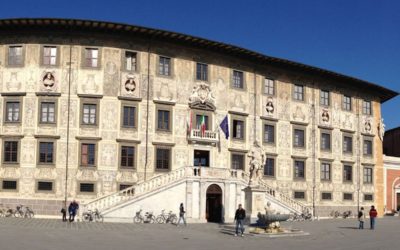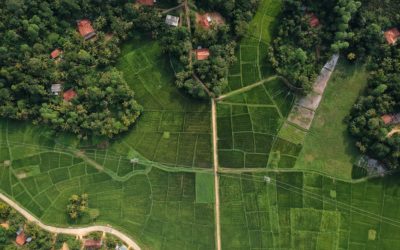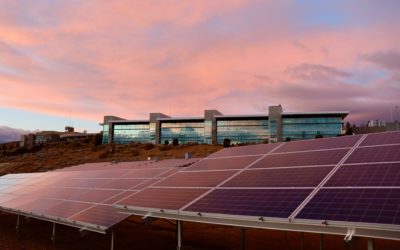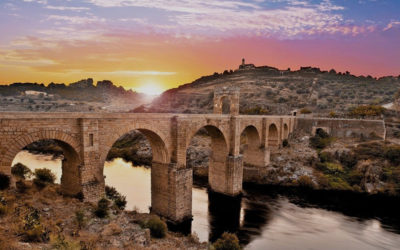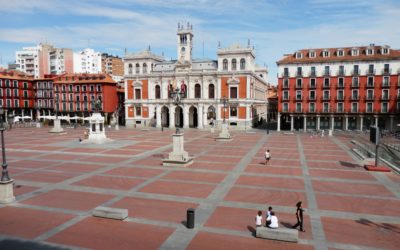CARTIF Projects
INHERIT
Next Generation Solutions for Sustainable, Inclusive, Resource-efficient and Resilient Cultural Heritage
Description
The overall vision of INHERIT is to create a systematic methodology, accompanied by leading-edge Information and Communication Technologies (ICTs), such as Internet of Things (IoT), Artificial Intelligence (AI) and (big) data analytics, and associated social/behavioural practices, towards sustainable, inclusive and resource-efficient Cultural Heritage (CH) solutions.
INHERIT will enable socially innovative and economic viable interventions at different urban levels (buildings, city/ neighbourhood), covering all relevant aspects of the heritage-built environment’s life cycle: (1) Design and renovation; (2) Monitoring, operation and management; (3) Preservation and maintenance. The solutions will be tested in 8 cultural heritage sites across EU. In addition, INHERIT will create a capacity building programme addressing heritage operators and stakeholders to support sustainable CH with particular focus on NEB community and projects and will work on policy recommendations towards sustainable heritage.
Objectives
-
- To engage stakeholders in a co-creation process for designing the INHERIT approach, enabling assessment, analysis and decision support for an open, accessible, inclusive, resilient, sustainable and low-emission Cultural Heritage.
- To propose a novel framework for inspecting, monitoring, assessing the CH and a catalogue of tailor-made cost-effective solutions across key thematic pillars (energy, resources, climate resilience and inclusiveness).
- To design and build an ICT-based platform, enabling data sharing and data-driven services to support decision making and analysis from CH stakeholders, and promote sustainable renovation, efficient monitoring, management and maintenance of the heritage-built environment.
- To test and evaluate the services with the relevant stakeholders in 8 pilots across EU and pave the way for their exploitation and sustainability plans.
- To provide a capacity building programme and make it available to CH stakeholders, facilitating the replication and sustainability of the INHERIT solutions.
Actions
- Responsible to set-up of a EU common approach to carry out the digitally based technical inspection of heritage buildings, in order to assess current status and objectively prioritising the resources to be allocated to cover all relevant aspects of their life cycle, upon a seamless multidimensional and multipurpose H-BIM model.
- Responsible to develop a framework and procedures to assess and monitor CH buildings in different dimensions: energy-efficiency, indoor environmental quality and comfort, accessibility and inclusiveness, resource efficiency and circularity and climate resilience.
- Responsible for the development of the preventive maintenance with H-BIM service. A multidimensional H-BIM semantic modelling will be delivered by CARTIF, to allow the exploration and multifaceted analysis of (re)use interventions in various scenarios upon a multidimensional analysis, surpassing the traditional design-bid-build delivery approach.
- Responsible for the development of the heritage buildings environmental climate scenarios service. It will enable the assessment of the most relevant impacts affecting CH buildings in different pilot sites (City of Jastrebarsko, Croatia; and City of Visby, Sweden), at city scale, according to the most prominent climate hazards.
- Responsible for the Spanish Pilot, the Monastery of Ntra. Sra. Del Prado, in Valladolid. It is an national, historical and artistic monument with three cloisters of two floors and semicircular arches. INHERIT will optimise the overall energy performance, particularly with regard to cost-effectiveness, facing solutions applicable to the reliable and respectful hisotircal renovation of heritage buildings.
Expected Results
- Methodology to carry out the digitally based technical inspection of heritage buildings, which is the basis for the development of the multidimensional and multipurpose H-BIM model.
- Assessment and monitoring framework to assess the current status of the cultural heritage buildings and to enable monitor them across a series of pillars through a set of KPIs to be assessed.
- Service on Preventive Maintenance with H-BIM, delivering an H-BIM collaborative model in the form of a semantically meaningful georeferenced spatial information structure, tested in the Spanish Pilot (Monastery of Ntra. Sra. Del Prado, in Valladolid).
- Service on Heritage buildings environmental climate scenarios, which will assess the most relevant impacts affecting CH buildings at city level, calculating relevant KPIs that will be impacted by different climate scenarios.
- Contribution to other services on: Interactive screen use and AR-VR interfaces for heritage building design and renovation construction; Decision support tool for optimal renovation planning; Digital Twin for heritage facilities’ real-time monitoring and managament; and GIS-based solution for sustainable heritage maintenance.
R&D Line
- Research on advance techniques on the multi-scale energy planification (building to region).
Partners
|
|
Horizon Europe
101123326

Total Budget: 4,999,937.50€
CARTIF Budget: 437,875€
CARTIF Financing: 437,875€
Duration: 01/10/2023 – 31/03/2027

Responsible
Carla Rodríguez
Energy Division
Networking
Energy Policies and Climate Projects:
THUNDER
THUNDER project aims to overcome existing barriers hampering a wide adoption of DCs waste heat recovery strategies, providing an innovative, efficient and cost attractive Seasonal Thermal storage based on Thermochemical Materials
SCO2OP-TES
SCO2OP-TES focuses on the development of technologies for storing electricity in the form of heat, which is then converted back into electricity (P2H2P – power-to-heat-to-power).
HYDRA
HYDRA focuses on understanding and addressing the potential impact of widespread hydrogen use on climate, environment and society. The project assesses a scenario of high hydrogen penetration in the energy mix.
IAM COMPACT
IAM COMPACT supports the assessment of global climate goals, progress, and feasibility space, and the design of the next round of Nationally Determined Contributions (NDCs) and policy planning beyond 2030 for major emitters and non-high-income countries.
BUILDSPACE
BUILDSPACE aims to couple terrestrial data from buildings with aerial imaging from drones equipped with thermal cameras and location annotated data from satellite services to deliver innovative services for the building and urban stakeholders and support informed decision making towards energy-efficient buildings and climate resilient cities.
ECOESION_TOOL
The main objective of Ecoesion_tool project is the implementation of a web-based, easy-to-use and user-friendly tool based on the Ecoesion model developed by the University of PISA (UNIPI)
NEVERMORE
NEVERMORE will support excellence in climate research overcoming the current approach in evaluating climate change impacts and risks across sectors and adaptation and mitigation policies and measures.
PACES Logroño
The aim of the project is the preparation and elaboration in the framework of the Deal of Majors for the Climate and Energy, of the Plan of Action for the Climate and Energy Sustainable of the municipality of Logroño.
SPANDAM
Development of a simulation tool to support decision-making and the design of public policies aiming to achieve a balanced and sustainable demographics, socieconomic and environmental development in areas affected by depopulation.
RethinkAction
Development of a cross-sectoral decision-making platform to foster climate action, focusing on climate mitigation and adaptation.
RENERMap
The main objective of RENERMap is to achieve a detailed analysis of the renewable potential available at local level, including both roofs and municipality land, to respond to the demand of energy that it generates, and to help to achieve the development of self-sufficient energy municipalities.
EACC_Extremadura
Extremadura Strategy for Adaptation to Climate Change 2021 – 2030 aims to analyse the influence of climate change on the Autonomous Community of Extremadura , identifying impacts, risks and climate vulnerabilities on the main strategic sectors of the region.
e-PARCERO
ePARCERO project will develop an automated prototype that allows the identification of cadastral parcels without current use in demonstrators located in relevant areas of Castilla y León, taking into account the different conditions that may affect each parcel.
BUILTHUB
BUILTHUB aims to develop a strctured and inclusive reliable data collection approach on the EU building stock, as well as an easy to access & use datahub, in the shape of a strctured web-based platform.
EACC Val
EACC Val project aims to analyze the influence of climate change on the municipality of Valladolid, identifying climate risks and vulnerabilities and proposing actions that affect its future climate adptation.
LOCOMOTION
LOCOMOTION will design a set of IAMs that will provide politicians and other stakeholders with assessment tools to analyze the feasibility, effectiveness and costs of the different sustainability policies and strategies.
ELISE Energy Pilot
The aim of the ELISE action is to promote a coherent and consistent approach to the sharing and reuse of location data across borders and sectors.
CCliMAP
The CCliMAP project has the general objective of providing resources and instruments to aid decision-making for the reduction of greenhouse gases
TEC4ENERPLAN
The main objective is the development of advanced methods for energy planning at different scales (building to region), that support the development of tools. It will offer a working basis to those entities responsible of the generation, deployment and evaluation of energy actions aimed at the compliance with the energy efficiency objectives 2020–2050






